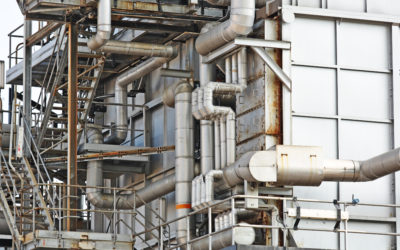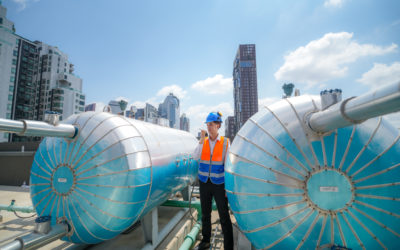Ensuring Heat Exchanger Reliability Amidst Expanding Clean Energy Initiatives
The Biden administration’s expansion of clean energy tax credits has accelerated the adoption of low-carbon technologies across the United States. As energy facilities integrate renewable sources, maintaining the efficiency and longevity of critical components like heat exchangers becomes paramount. HeatX, an advanced surface treatment, plays a vital role in enhancing heat exchanger performance in these emerging clean energy applications.
The Impact of Clean Energy Tax Credits
The Inflation Reduction Act (IRA) of 2022 introduced substantial tax incentives to promote clean energy manufacturing and reduce greenhouse gas emissions. These incentives have led to over $215 billion in private sector investments, spanning more than 740 sites across 46 states and Puerto Rico, with the potential to create over 210,000 jobs.
The tax credits extend beyond traditional wind and solar power to encompass a broader range of low-carbon technologies, including marine energy, hydrokinetic power, nuclear fission and fusion, hydropower, geothermal energy, and waste energy recovery. This comprehensive approach aims to decarbonize the energy sector and expand electrical capacity to meet rising demand.
The Role of Heat Exchangers in Clean Energy Systems
Heat exchangers are integral to various clean energy technologies, facilitating efficient thermal management in systems such as geothermal plants, nuclear reactors, and waste heat recovery units. Their performance directly influences the overall efficiency and reliability of energy production.
However, challenges like corrosion, fouling, and scaling can degrade heat exchanger efficiency over time, leading to increased maintenance costs and operational downtime. Addressing these issues is essential to ensure the sustainability of clean energy initiatives.
HeatX: Enhancing Heat Exchanger Performance
HeatX is a nanocomposite surface treatment engineered to improve heat exchanger and condenser performance. Its omniphobic properties repel both oil and water-based contaminants, mitigating biofouling and corrosion while preserving heat transfer efficiency.
Key benefits of HeatX include:
- Corrosion Resistance: By forming a protective barrier, HeatX shields heat exchanger surfaces from corrosive elements, extending equipment lifespan.
- Fouling Prevention: The treatment’s omniphobic nature reduces the accumulation of deposits, maintaining optimal heat transfer rates and reducing the need for frequent cleaning.
- Maintenance Reduction: With decreased fouling and corrosion, facilities experience lower maintenance requirements, leading to cost savings and increased operational uptime.
Implementing HeatX in Clean Energy Facilities
As clean energy projects expand under the IRA’s tax incentives, integrating HeatX into heat exchanger maintenance strategies offers several advantages:
- Enhanced Efficiency: Maintaining peak heat exchanger performance contributes to the overall efficiency of clean energy systems, maximizing energy output.
- Cost Savings: Reduced maintenance and extended equipment lifespan result in financial benefits, allowing for reinvestment into further clean energy developments.
- Environmental Impact: Efficient heat exchangers reduce energy consumption and greenhouse gas emissions, aligning with the environmental goals of clean energy initiatives.
The expansion of clean energy tax credits has catalyzed the growth of low-carbon technologies across the United States. Ensuring the reliability and efficiency of critical components like heat exchangers is essential to the success of these initiatives. HeatX surface treatment offers a proven solution to enhance heat exchanger performance, supporting the durability and sustainability of clean energy applications. Learn more about HeatX with our experts.



